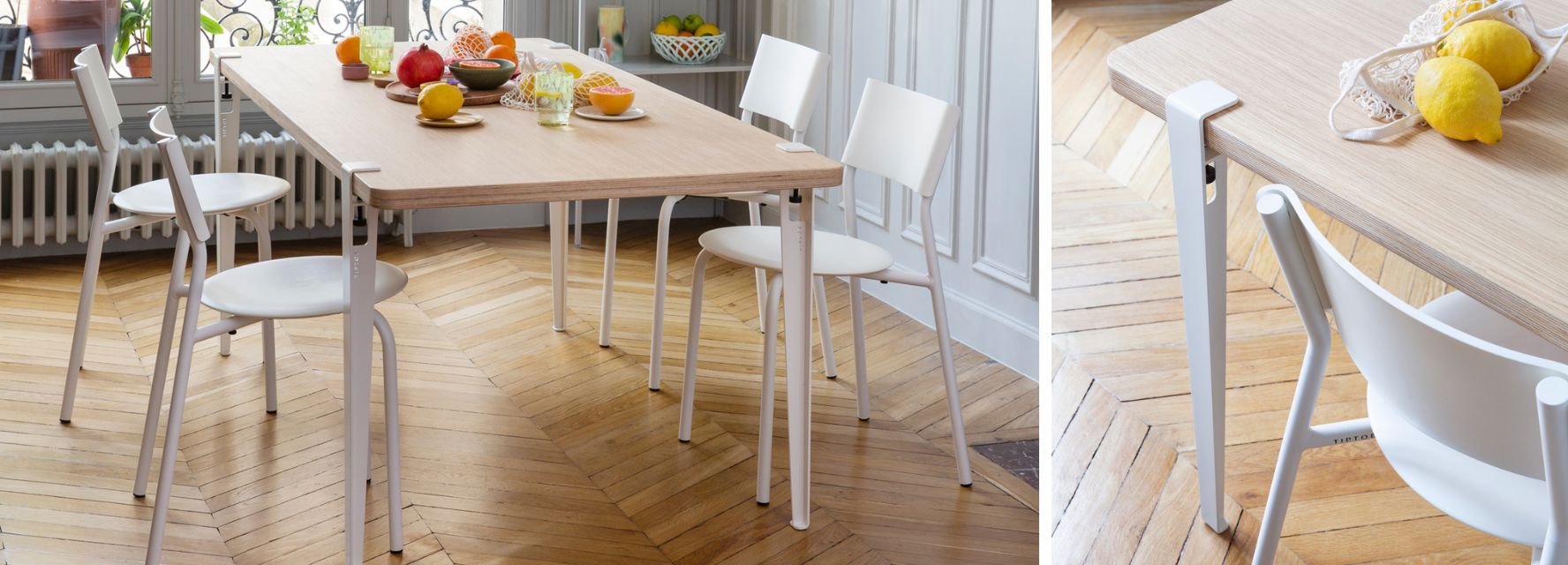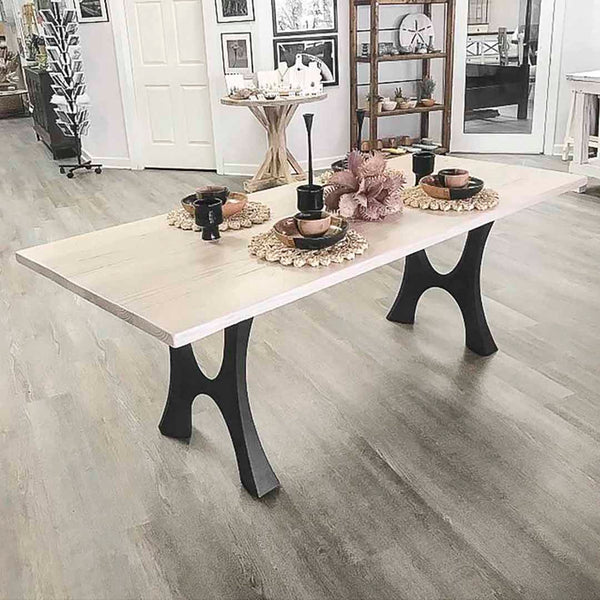Dining Room Table Legs: A Guide to Selecting the Right Style for Your Home
Dining Room Table Legs: A Guide to Selecting the Right Style for Your Home
Blog Article
From Typical to Modern: Locate the Suitable Dining-room Table Legs for Your Style
The choice of dining-room table legs plays a critical role in specifying the overall personality of your area, connecting the gap in between traditional craftsmanship and modern aesthetics. While timeless designs such as cabriole and transformed legs stimulate a sense of ageless sophistication, contemporary styles like barrette and geometric options provide a chance for striking aesthetic rate of interest. Evaluating the appropriate balance in between these designs needs a nuanced understanding of your existing design and personal taste. As you think about these elements, the inquiry stays: how can you effortlessly integrate these varied leg styles to create an unified dining experience?
Understanding Table Leg Styles
The variety of dining-room table leg styles can dramatically affect both the looks and capability of the room. Each leg design adds one-of-a-kind aesthetic components and sensible attributes, catering to diverse style choices and usage needs. Understanding these styles is important for choosing the best table that straightens with your general interior design vision.
As an example, conical legs use a tidy, classic look that can boost an area's style, while stand bases supply security and maximize legroom, making them ideal for smaller sized areas. Hairpin legs, a trademark of mid-century contemporary design, present a commercial style, enabling a ventilated, open feel. Likewise, trestle legs evoke rustic beauty, giving robust support and a sense of timelessness.
Wooden legs can bring warmth and structure, whereas metal alternatives commonly convey a smooth, modern vibe. Eventually, understanding table leg styles is crucial for creating a natural eating area that shows individual style while making sure functionality and convenience.
Conventional Table Leg Options
When picking eating space table legs, conventional options frequently personify ageless elegance and workmanship. These styles reflect an abundant heritage and a dedication to top quality, making them optimal for those who appreciate timeless looks.
One of one of the most renowned conventional leg designs is the cabriole leg, defined by its elegant curved shape. This layout usually includes attractive carvings and is most commonly discovered in Queen Anne and Chippendale furnishings. Another popular choice is the turned leg, which boasts a series of smooth, rounded forms that supply a timeless appearance while keeping security.
In addition, the straight leg, while simple, offers a durable and unadorned structure that can blend perfectly with a range of tabletop styles. For those attracted to ornate outlining, claw-and-ball feet legs evoke a feeling of splendour and can work as a stunning focal factor in any type of eating space.
Finally, stand bases, although not strictly legs, supply a different traditional alternative that enables enough legroom and can be perfectly sculpted. Each of these typical leg designs adds to the overall setting of an eating space, marrying feature with visual charm.

Modern Table Leg Designs
Modern go to my site table leg layouts supply a varied variety of designs that emphasize clean lines and ingenious products. These layouts often prioritize functionality while working as striking prime focus within a dining room. Minimal aesthetics are widespread, with legs crafted from materials such as metal, glass, and engineered wood, which contribute to a contemporary and ventilated feel.
One prominent design is the hairpin leg, identified by its slim, tapered framework that gives stability without frustrating the tabletop (dining room table legs). This style is often located in mid-century modern furnishings and can easily complement different table shapes. One more fad is the use of geometric forms, where legs might take on unbalanced or angular forms, adding aesthetic passion and a touch of artistry

Mixing Styles for Unique Spaces
Often, homeowners look for to create unique eating rooms that mirror their individual style by mixing various design elements. This technique enables for the incorporation of varied aesthetics, resulting in an unified yet unique atmosphere. For example, pairing a rustic check out here wooden table with smooth, modern steel legs can produce an appealing contrast that elevates the area's total allure.
Additionally, incorporating vintage table legs with modern tabletops can stimulate a sense of background while keeping a modern sensibility. Such mixes not only display specific preference however also urge creative thinking, allowing house owners to curate an area that feels both individual and inviting.
Shade plays an important role in this blending process; selecting table legs that enhance or comparison with the existing color design can enhance aesthetic rate of interest. As an example, whitewashed legs can soften the daring of a dark table surface, creating a well balanced aesthetic.
Tips for Choosing the Right Legs
Picking the right table legs is necessary for accomplishing both capability and aesthetic appeal in your eating room. Begin by considering the overall style of your area. Typical settings gain from legs that feature detailed carvings or transformed styles, while modern areas might ask for smooth, minimal designs.
Next, examine the height and stability of the legs. dining room table legs. Common dining tables vary in between 28 to 30 inches in height, so guarantee the legs complement this dimension for convenience. Furthermore, robust products, such as hardwood or metal, can boost security and long life
Review the leg shape too-- choices consist of directly, tapered, or stand layouts. Straight legs supply a timeless appearance, while conical legs can add a touch of style. Pedestal bases provide enough legroom and are excellent for smaller rooms.
Final Thought
In recap, picking the excellent dining space table legs requires mindful consideration of both conventional and modern-day designs. Typical alternatives such as cabriole and transformed legs offer ageless sophistication, while modern-day layouts like hairpin and geometric shapes offer a contemporary touch. By harmonizing leg style, height, and product with the overall décor, a natural and inviting ambience can be achieved. Eventually, the chosen table legs need to mirror the wanted visual, enhancing the dining experience within the space.
The variety of eating space table leg styles can considerably influence both the aesthetics and performance of the space. Eventually, recognizing table leg designs is necessary for producing a cohesive eating location that reflects individual style while ensuring practicality and comfort.One of the most famous conventional leg designs is the cabriole leg, defined by its graceful bent shape. Straight legs supply click reference a timeless appearance, while conical legs can add a touch of beauty.In summary, selecting the optimal eating area table legs calls for cautious factor to consider of both standard and modern-day styles.
Report this page